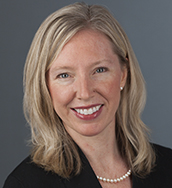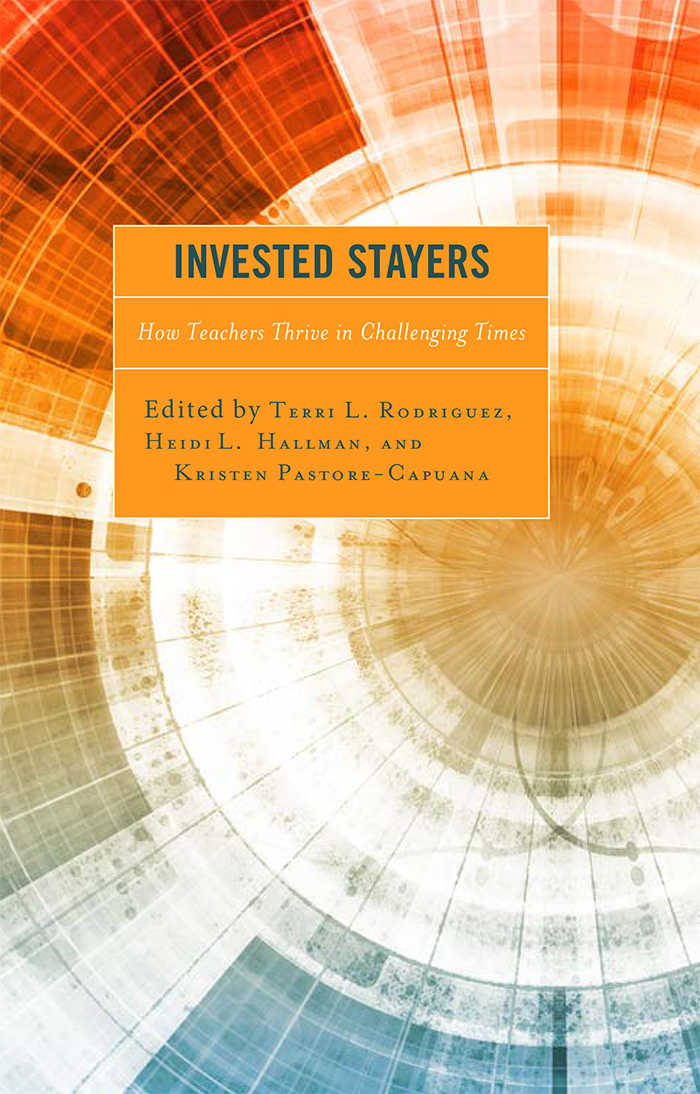New book 'Invested Stayers' tells stories of teachers who overcame early career challenges

LAWRENCE — Teaching is a challenging profession. Low pay, long hours, reliance on testing, and state and federal mandates make the job difficult, to say nothing of a pandemic that has upended education. Those stressors cause countless teachers to leave the field every year. Yet many others meet the challenges and stay. A new book co-edited by a University of Kansas scholar tells the stories of those who have persisted as stayers in the classroom.
“Invested Stayers: How Teachers Thrive in Challenging Times,” published this month, pairs teachers and teacher educators from across the country to discuss some of the most pressing challenges that educators face today, how teachers have innovated to overcome them and how those training the next generation of teachers can prepare them.
 “There has been a lot of focus on early career teachers and why they leave in recent years,” said Heidi Hallman, professor of curriculum & teaching at KU and one of the co-editors. “We knew, though, as teacher educators and former public school teachers ourselves, that there were people who decide to stay in the field despite the challenges. We wondered, ‘Are there stories behind why they stay?’”
“There has been a lot of focus on early career teachers and why they leave in recent years,” said Heidi Hallman, professor of curriculum & teaching at KU and one of the co-editors. “We knew, though, as teacher educators and former public school teachers ourselves, that there were people who decide to stay in the field despite the challenges. We wondered, ‘Are there stories behind why they stay?’”
“Invested Stayers” (Rowman & Littlefield) was co-edited by Hallman, Terri Rodriguez of the College of St. Benedict and St. John’s University, and Kristen Pastore-Capuana of State University of New York-Buffalo. The book is organized into three sections: social, political and disciplinary landscapes.
Chapters in the social landscapes section include examinations of advocating for refugee and immigrant students, thriving in special education and culturally responsive teaching. Political challenges such as top-down accountability initiatives, standards-based education and critical collaboration among teacher communities appear in the book’s second section. New visions for science education, improving college readiness in mathematics, using digital spaces to foster learning communities and using hope as a catalyst to thrive are among the topics addressed in the disciplinary landscapes section.
 Each chapter acknowledges a challenge teachers commonly face and shares the story of an educator who has met the challenge. Featuring both educators who saw teaching as a calling and others who joined the profession later in their careers, they explore why they have stayed in the field and how teacher educators can help prepare future teachers to be ready for such challenges. The book’s authors acknowledge that no challenge is universal and that school context varies widely not only by state and region, but also within a single district.
Each chapter acknowledges a challenge teachers commonly face and shares the story of an educator who has met the challenge. Featuring both educators who saw teaching as a calling and others who joined the profession later in their careers, they explore why they have stayed in the field and how teacher educators can help prepare future teachers to be ready for such challenges. The book’s authors acknowledge that no challenge is universal and that school context varies widely not only by state and region, but also within a single district.
Teacher educators are sometimes critiqued for assuming teachers can meet and overcome school-level challenges and thrive in any setting. The authors acknowledge that is not the case and share stories of both teachers who have thrived in what are considered underprivileged schools and others who did not fit in advantaged schools. Stories are shared from teachers who have been with one school for many years as well as others whose careers were reinvigorated upon changing schools.
“We’re trying to show future teachers that knowledge of these inequities can be the reason they stay. Stayers often develop agency that enables them to continue, learn and hone their craft,” Hallman said. “There are teachers doing that this very minute.”
The book also includes stories of teachers who thrived outside of their comfort zone. One chapter tells the story of a teacher who helped organize and carry out a strike for better pay, collective bargaining rights and other improvements. Political activity was the best professional development she ever experienced, the educator shared, as it helped define the vision for what professional teaching can be and fostered respect for colleagues who had similar feelings but were not comfortable striking.
Educators often face challenges in implementing curriculum. The disciplinary landscapes section presents the stories of teachers who faced the common dilemma of reaching struggling students, revamping how they teach their subject matter and learning new ways to individualize their work to meet students’ needs. Throughout, stayers show their ability to perceive individual students’ needs, openness to updating their approaches and seeing challenges as an opportunity to improve their own teaching. The section also includes chapters by KU faculty members Joe O’Brien, Susan Gay and Carrie LaVoy.
While the book was written before the COVID-19 pandemic introduced a whole new world of challenges to teachers and schools, the editors and authors say it appeals to veteran teachers, new teachers and those training the next generation of American teachers. The pandemic is forcing changes that no one chose, but teachers still early in their careers can hopefully see how others met the common obstacles and chose to become "invested stayers" themselves.
“I think there’s a myth that there is just one reason why people stay, but I also think new teachers can benefit from seeing the multiple reasons why veteran teachers persevere and how they innovated to meet challenges,” Hallman said. “Hearing about how it has happened in multiple contexts is valuable as well.”
Top photo credit: Pexels
Book image credit: Rowman & Littlefield